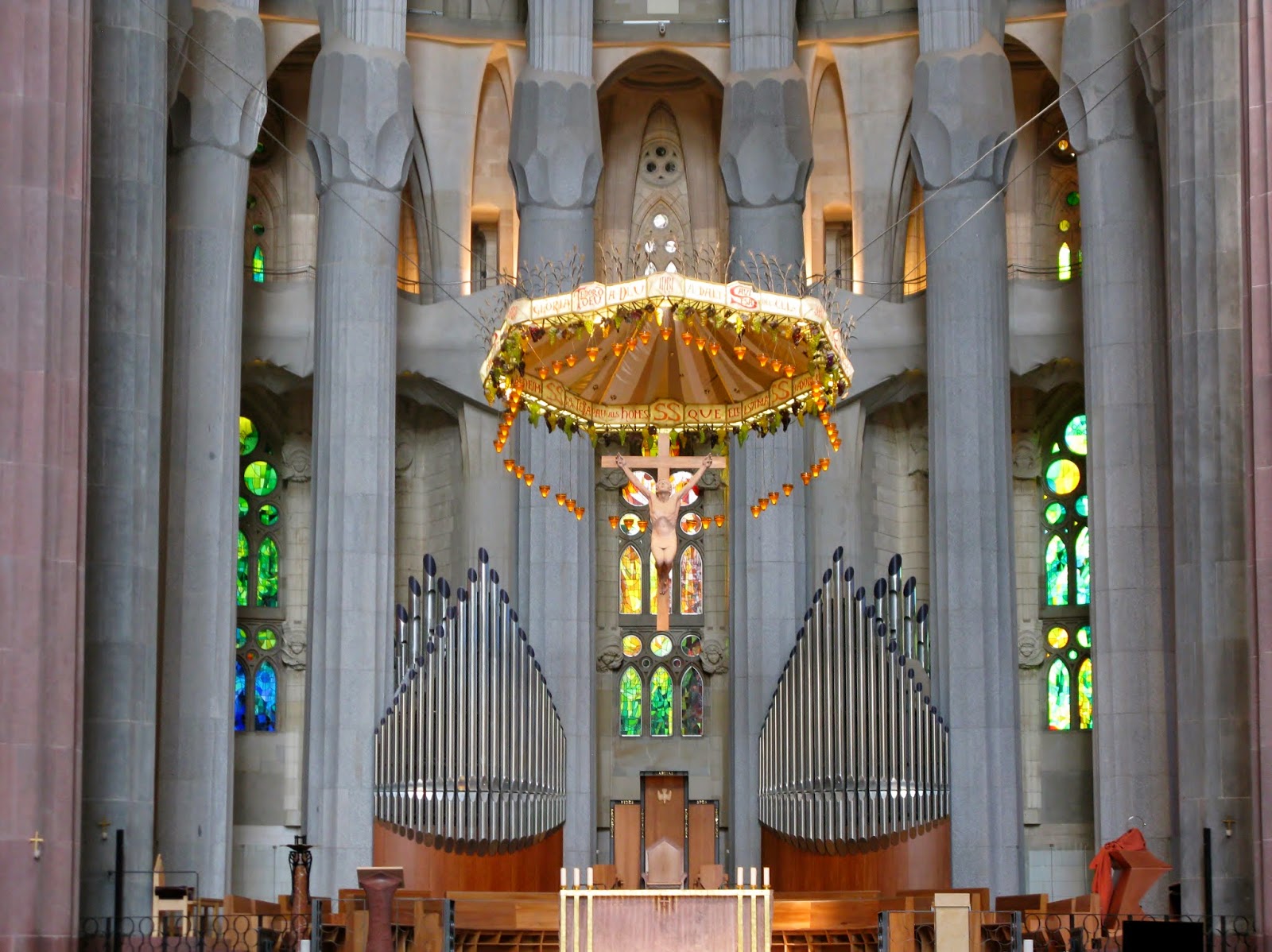To appreciate Gaudí, there are a few key elements that you have to keep in mind: nature, geometry, and religion. Representations of the natural world have been present in architecture since Biblical times. For example, when Solomon built the temple, the tops of the pillars were adorned with carvings of pomegranates. Gaudí took this idea one step further: he didn't just decorate his buildings with various elements of nature, he specifically designed his creations to imitate natural phenomena. A good example of this can be found in Park Guell, which definitely deserved more than the couple of hours that I was able to spend there. Here's a picture of an elevated pathway in the park; notice how the columns are designed to imitate tree trunks.
Pictured: a woodpecker's worst enemy.
As far as geometry goes, it's pretty clear that Gaudí knew his stuff. He was a particular fan of using "ruled surfaces" which, in layman's terms, means that he used a bunch of straight lines to make a curve. Doesn't seem like all that big of a deal when you put it that way, but keep in mind that he was the first to experiment with these new structures; he had no precedents to tell him whether they would succeed or fail. Of course, they did succeed and his impressive use of curves still manages to produce quite an effect. Here's one of the buildings at the entrance to Park Guell; he employs his signature-style curves in a way that I can only describe as "whimsical."
All these lines make a curve, all these lines make a curve, all these lines...
The final thing to keep in mind about Gaudí is the fact that he was a devout Catholic. Religion had a profound effect on Gaudí's life and his work, which can be seen clearly in his masterwork, the basilica of La Sagrada Familia. Of all the cathedrals I've seen so far, I liked this one best. Sure, it lacks the overwhelming size of the cathedral in Seville or the gaudy, gleaming ornamentation of St. Peter's, but the elegant beauty of La Sagrada Familia left me speechless (those of you who know me can appreciate how difficult that is).
Here's the church, here's the steeple, open the doors...
...and stand in awe with the people
This is a case where pictures are inadequate to give you a good impression of, well, the impression that it has on people. However, I can at least give it a shot.
Gaudí's use of light is absolutely brilliant.
It's clear that Gaudí obsessed over even the slightest details. Take the stained glass, for example: he coordinates the colors so that the ambient light transitions smoothly as the sun moves across the sky, and he incorporates names of Christ and of other churches into the windows. Or take a look at the supports: he uses columns with 6, 8, 10, and 12 sides, each type made from a different kind of stone. The four 12-sided columns are the largest and occupy a central position. At the top of each is a representation of each of the gospels as one of the four living creatures in Revelation 4.
Anyway, I could go on for days about the Sagrada Familia, as Hunter Guthrie knows very well by now. The last thing to mention about Gaudí's magnum opus is that he never got to see it completed. In fact, neither did I; the building, which was started in 1882, was not even close to being done at the time of Gaudí's death in 1926. Using designs from Gaudí's notes, construction has been able to continue, but it's not expected to be entirely finished for at least another twelve years.
A work in progress.










No comments:
Post a Comment